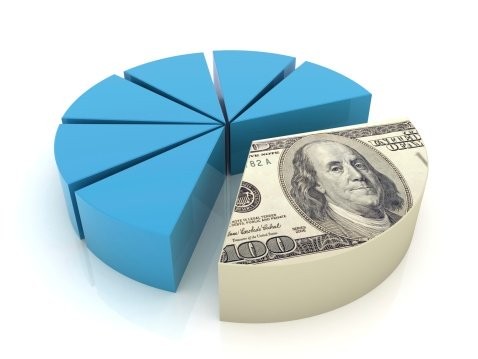IShares Morningstar MultiAsset Income Long On Rate Risk iShares Morningstar MultiAsset High
Post on: 24 Июнь, 2015 No Comment

Summary
- IYLD has a 6% yield, one of the highest in the multi-asset space.
- IYLD has roughly 75% exposure to fixed income, making IYLD very sensitive to changes in interest rates.
- IYLD has exposure to more volatile sectors of the fixed income market such as long-term U.S. Treasuries and emerging market local currency bonds.
Multi-asset ETFs offer investors diversification within a single ETF. Stocks, bonds, preferred stock, REITs, MLPs and commodities are some of the assets that can be found in a multi-asset fund. These funds are attractive to investors due to the promise of diversification and sometimes high yields, but investors need to dig into the details to figure out how the fund is constructed.
iShares has a fund in the multi-asset space called iShares Morningstar Multi-Asset Income (BATS:IYLD ). The fund was launched in April 2012 and has amassed nearly $200 million in assets, and with a 6% 30-day SEC yield, delivers one of best income streams among this class of funds, but does so with heavy fixed income exposure.
Index & Strategy
IYLD tracks the Morningstar Multi Asset High Income Index. The index is made up of ETFs, which must adhere to basic criteria such as three-month trading volume above 25,000 shares, at least one year of history and dividends paid in the past 12 months.
The index is weighted as follows: 60% of assets in fixed income; 20% of assets in equity and 20% of assets in alternative income. Up to 25% of assets can be held in non-U.S. dollar currencies.
The index is rebalanced quarterly.
Currently, IYLD holds the 10 following funds:
- iShares iBoxx High Yield Corporate Bond (NYSEARCA:HYG ) — 20.08%
- iShares 20+ Year Treasury Bond (NYSEARCA:TLT ) — 15.08%
- iShares Mortgage Real Estate (NYSEARCA:REM ) — 14.74%
- iShares Core High Dividend (NYSEARCA:HDV ) — 12.09%
- iShares Emerging Markets Local Currency (NYSEARCA:LEMB ) — 9.98%
- iShares International Select Dividend (NYSEARCA:IDV ) — 8.06%
- iShares 10-20 Year Treasury Bond (NYSEARCA:TLH ) — 5.05%
- iShares iBoxx $ Investment Grade Corporate Bond (NYSEARCA:LQD ) — 5.04%
- iShares 10+ Year Credit Bond (NYSEARCA:CLY ) — 5.02%
- iShares International Developed Real Estate (NASDAQ:IFGL ) — 4.85%

Performance
IYLD has performed well since inception and in 2014, it is beating First Trust Multi-Asset Diversified Income (NASDAQ:MDIV ) and holding its own with the S&P 500 Index. IYLD is up 9.30% through September 24 versus the 9.56% return for SPDR S&P 500 (NYSEARCA:SPY ). MDIV is up 7.65% over the same period.
IYLD is up 19% since inception. Of that gain, the vast majority came from dividends. IYLD’s price is only up 4.4% since inception, leaving 14.6% of return from dividends, roughly a 75/25 split.
Expenses
IYLD charges a management fee of 0.60%, but could rise to 0.65% at the end of 2014 when a fee waiver expires.
Income
IYLD had a 30-day SEC yield of 6.03%. Dividends are paid monthly.
Dividends have moved in a general upward direction, though gains stalled during the summer.
Risk & Reward
IYLD has ample real estate exposure at roughly 20% of assets, but it is heavily tilted towards the mortgage REITs that make up REM. These securities are sensitive to interest rates.
The fund delivers a slightly higher yield than a fund such as First Trust Multi-Asset Diversified Income, but it does so with a much higher proportion of income funds, at 60% of assets. Adding in the nearly 15% current allocation in REM, makes for a portfolio that is roughly 75% invested in securities directly impacted by interest rates.
Assets such as dividend paying stocks, preferred shares and MLPs have all shown some sensitivity to interest rates, but these assets have a relatively weak correlation with interest rates versus fixed income, which is directly impacted by changes in interest rates. Furthermore, in addition to holding REM, the fund holds bonds with long duration via ETFs such as TLT. This makes IYLD highly sensitive to interest rates.
This chart below shows the price ratio of MDIV to IYLD, along with the 10-year Treasury yield in black. A rising line indicates MDIV is outperforming IYLD. As can be seen, there is almost a perfect correlation between the underperformance in IYLD and rising interest rates, as would be expected given IYLD’s sensitivity to rates.
Even though IYLD is heavily invested in fixed income, the fund holds the volatile REM along with high yield bonds in HYG and local currency emerging market bonds in LEMB. This makes for a relatively risky portfolio, compared to a run-of-the-mill bond fund, when investor fear rises.
IYLD has experienced very little capital appreciation in the past two years, as expected from a fund with heavy fixed income exposure. Unlike competitor multi-asset funds with heavy equity exposure, this fund may not hold its value over the long term, particularly if that future is a rising rate environment.
Conclusion
IYLD is the foil to Guggenheim Multi Asset Income (NYSEARCA:CVY ), which has roughly two-thirds of assets in equities. IYLD has roughly three-quarters of its assets in fixed income, making it a rate-sensitive fund. When interest rates are rising or the a bull market in stocks is roaring, IYLD will struggle to keep up with its peers. IYLD delivers a healthy yield, but goes into the riskier end of fixed income to get it.
IYLD is a solid offering and fills an important space in the multi-asset ETF field, delivering hefty and volatile fixed income exposure. Other multi-asset ETFs such as MDIV offer slightly smaller yields, but with a very different mix of assets; investors in search of income can decide which risks they’re willing to bear in search of higher income.
Disclosure: The author has no positions in any stocks mentioned, and no plans to initiate any positions within the next 72 hours. (More. ) The author wrote this article themselves, and it expresses their own opinions. The author is not receiving compensation for it (other than from Seeking Alpha). The author has no business relationship with any company whose stock is mentioned in this article.














